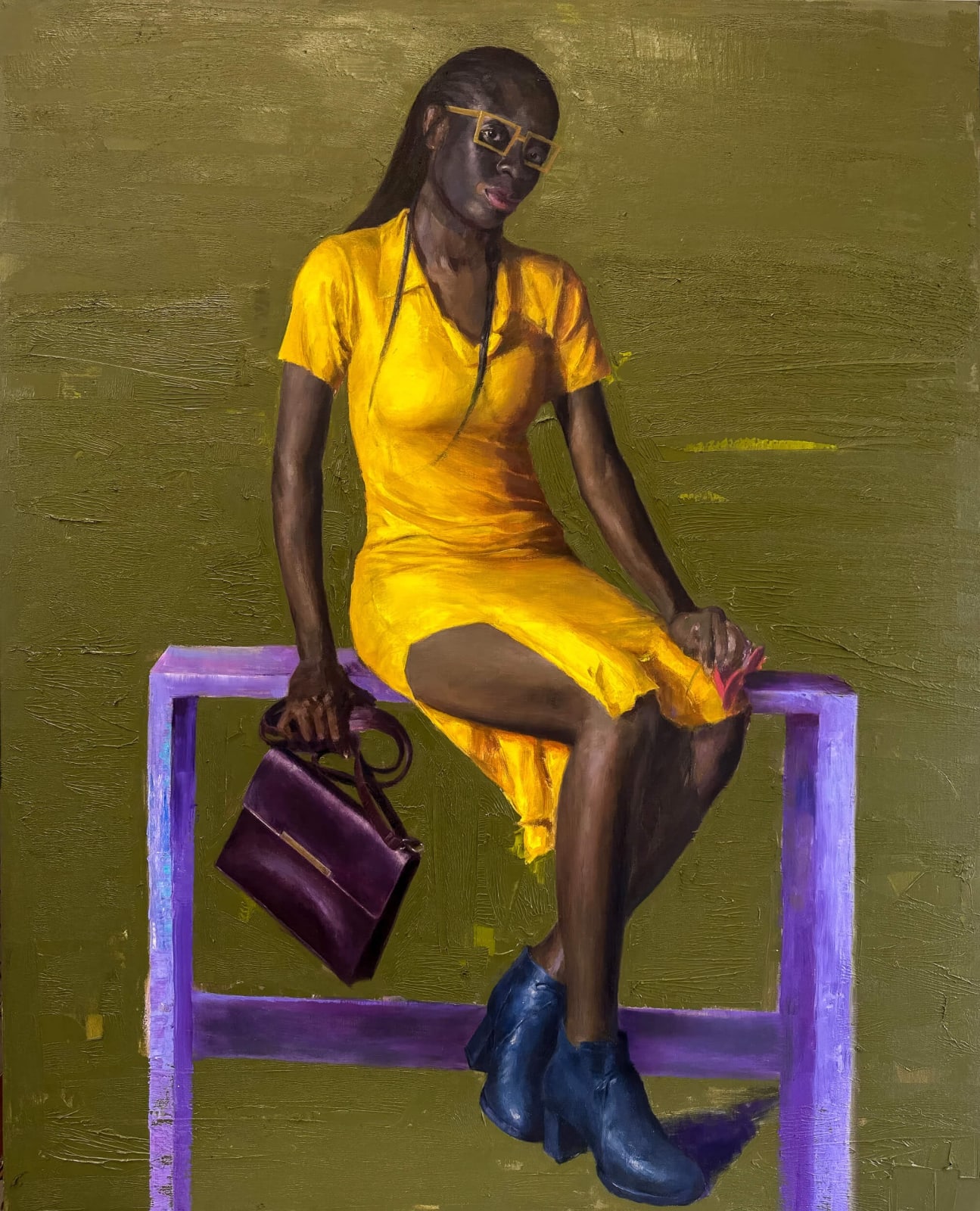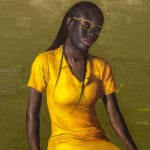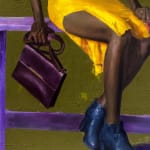
Ebenezer Akinola, Good Gal...II - Detail

Ebenezer Akinola, Good Gal...II - Detail
Ebenezer Akinola Ivory Coast, 1968-1978
(60 H x 48 W inches)
Further images
WHY BLACK FACES?
The color black, particularly when it comes to human beings, has long been used in the media to signify inferiority. Growing up, I noticed a recurring pattern in movies where black characters often died first. My siblings and I used to get angry and upset by this portrayal, seeing it as a reflection of society's bias. Unfortunately, many people internalize this bias, leading some to bleach their skin, believing that lighter skin is somehow superior to their natural complexion.
As an artist, I’ve come to recognize the profound power of black pigment. It’s not just a color; it’s the numero uno of pigments—deep, rich, and intense. Black demands attention. It has a voice of its own, one that cannot be ignored. Whether it’s a sleek black car that turns heads as it cruises down the road or a sharp black suit that exudes confidence and elegance, the color black signifies power, strength, dignity, and sophistication. It’s the color that commands respect. In fact, all colors, no matter how vibrant or distinct, ultimately converge in black.
This understanding led me to incorporate black fabrics into my paintings, not just as a bold statement but because I realized that black has the unique ability to unify and harmonize all other colors. It brings balance, grounding the composition and intensifying the hues surrounding it. But what truly fascinated me was the realization that I could achieve a range of dark, rich tones without even needing to use black directly from the paint tube. This opened my eyes to the concept that color is an illusion—an intricate blend of primary hues mixed in various degrees can create any color, including black.
Inspired by this discovery, I began to experiment with black not just in fabric but also on people’s faces. I sought to capture the depth and complexity of human expression by using black as a fundamental element of my portraits. The results were nothing short of phenomenal. Through this process, I learned how dark values could shape a face, bringing out both subtlety and intensity. It was a way to explore not just the surface, but the essence of a person’s identity, without reducing it to superficial stereotypes.
When people see my work, the first question I often get is: 'Why?' And my answer is simple—because black is not a symbol of inferiority. It is the foundation from which all other colors are born. It is powerful, transformative, and undeniably beautiful. Black is not just a color; it is a statement.






